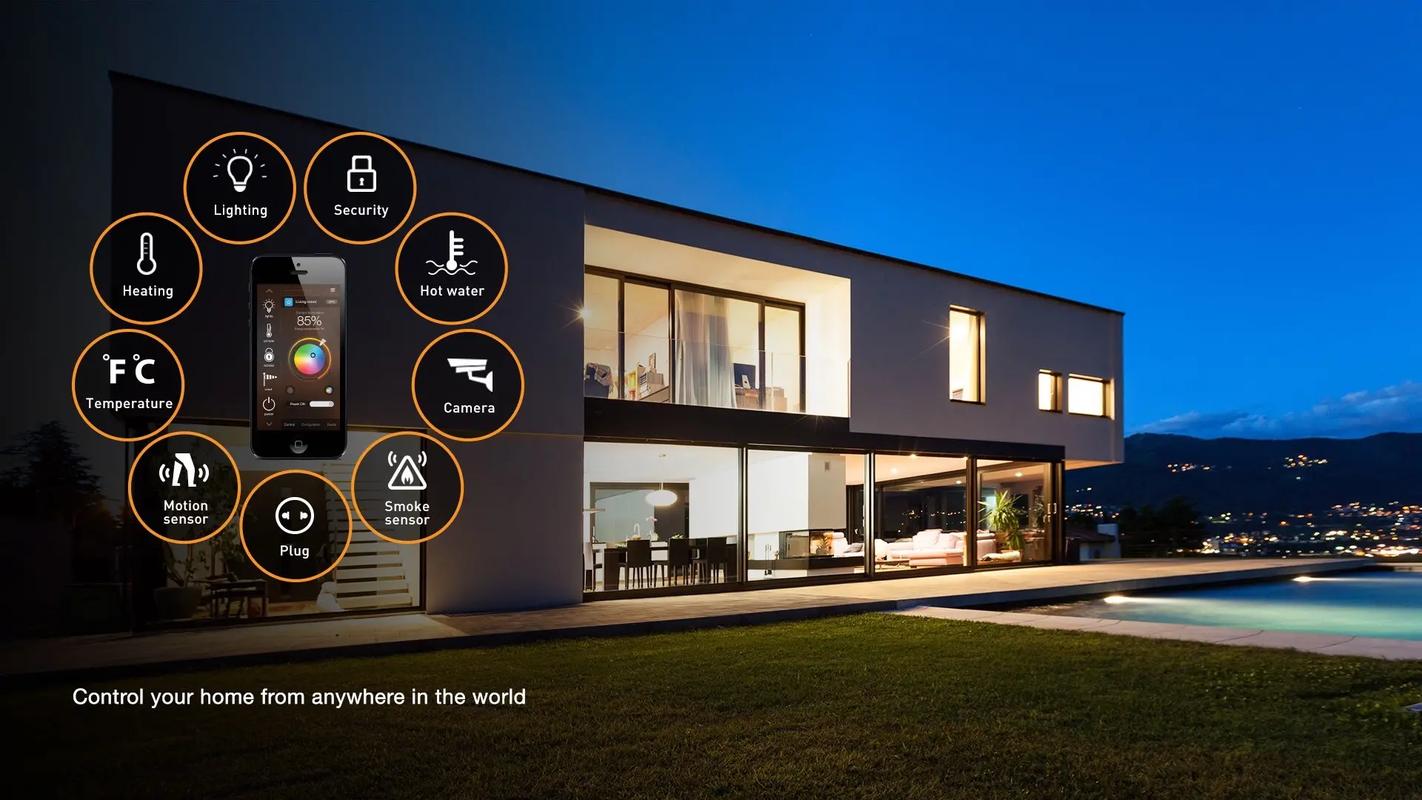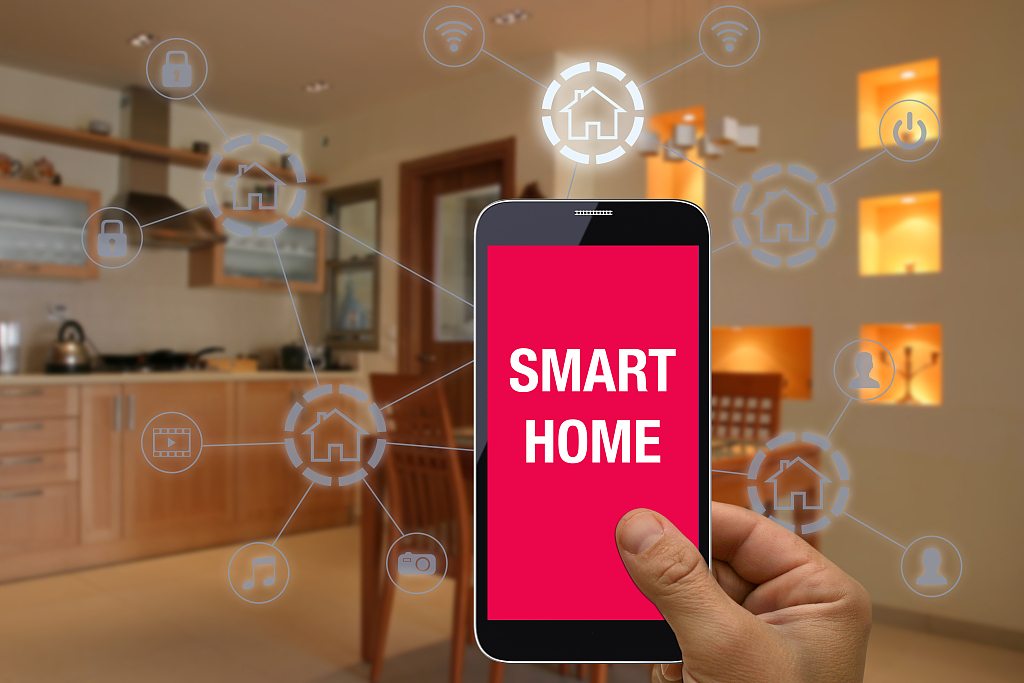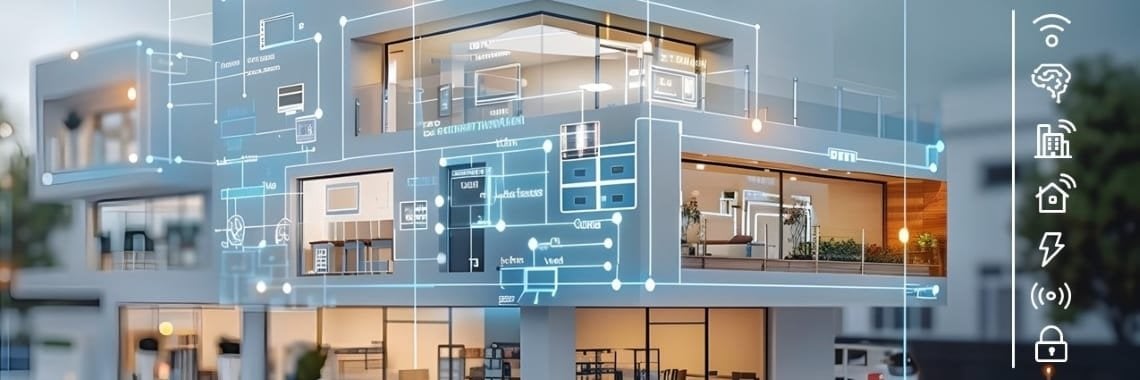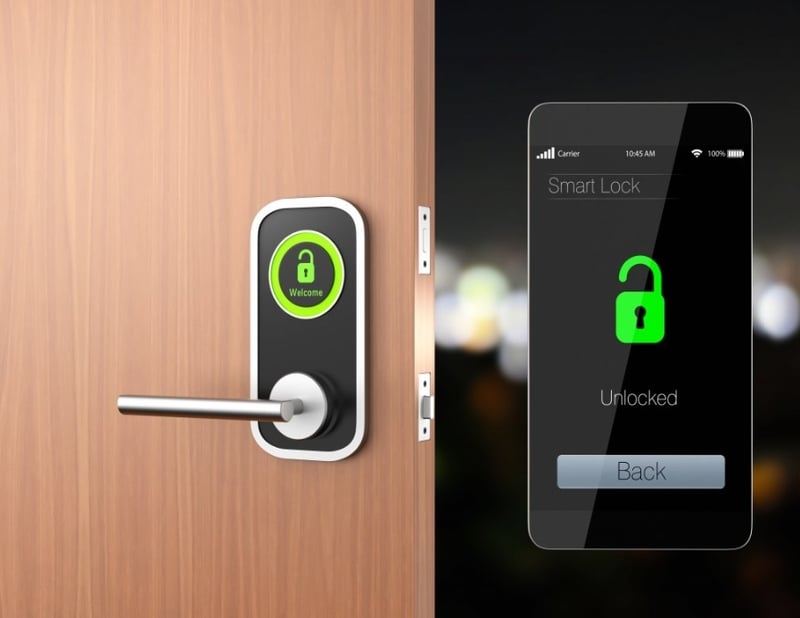Seven trends in wireless connectivity for 2025
In 2024, the Internet of Things (IoT) continued to expand rapidly, thanks to advances in smart home technology, enhanced connectivity, and the evolution of industry standards. Looking ahead, 2025 will usher in more innovations, especially in the smart home and building sectors. The following seven key trends are expected to shape the IoT landscape in 2025.

AI/ML will enable edge intelligence through wireless technology
Recent advances in artificial intelligence and machine learning will make our lives smarter and more automated, especially in the smart home and building sectors. However, streaming large amounts of data generated by smart devices to the cloud will reduce battery life and increase system response time. For many edge devices, running some of the AI/ML computations locally will greatly improve overall system performance. Wireless technologies such as Wi-Fi and Thread connect these smart devices to local networks and the Internet, enabling cloud connectivity and device-to-device communication. Combined with Matter technology, by 2025, edge devices will have seamless connectivity and interoperability, enabling a new generation of AI/ML capabilities.
AI/ML increases automation at the edge. Learn more about how Matter and AI/ML work together to automate the home.
Interoperability will lay the foundation for smart energy management
Global regulations and initiatives to reduce carbon footprints are driving homes and buildings to become more energy efficient. Achieving higher levels of efficiency requires smart energy coordination, where the grid, home generators, storage systems, and major appliances work seamlessly together to optimize overall energy consumption. For example, if solar panels are not generating enough power and grid demand is high, a washing machine may delay starting a load of laundry. To achieve this level of coordination, appliances, solar systems, and smart meters must be interoperable and communicate using unified standards. Advances in Matter technology are making this vision more feasible by 2025, and NXP’s smart system solutions provide developers with the tools to help them achieve greater energy efficiency.
Thread End Devices Accelerate to Improve Smart Home Infrastructure
The key to a truly automated home is the low-power, low-data-rate mesh network provided by Thread. Thread enables devices to run for years on a single small battery and maintain a stable connection through its self-healing mesh network. Thread is built on IPv6, is fully compatible with Matter, and complements high-data-rate Wi-Fi networks. The latest Thread version 1.4 adds several enhancements that are expected to accelerate adoption in 2025. For example, Thread provides a standardized way to share network credentials with new devices and border routers, allowing them all to join the same Thread network. Version 1.4 also supports the expansion of Thread networks over Wi-Fi and Ethernet, enhancing the robustness of its networks. These improvements will accelerate the adoption of Thread in 2025, with more devices joining the Matter ecosystem and smart homes becoming more connected, automated, and energy-efficient.
Growth in wireless connectivity will make buildings smarter, more efficient, and more secure
In 2025, wireless connectivity will not only make homes smarter and more energy efficient, but will also play a key role in the development of smart buildings. Wirelessly connected sensors, thermostats, and other IoT devices will transform existing buildings into smart buildings. Smart buildings optimize energy use efficiently through intelligent methods, such as closing curtains when meeting rooms are empty, automatically adjusting HVAC usage, and adjusting lighting levels based on external light conditions. By combining wireless connectivity with edge intelligence, multiple building systems can be upgraded to predict failures and provide maintenance recommendations, minimizing downtime. In addition, building network security will be improved as new systems adopt IP networks and standardized protocols that include multiple layers of security, such as KNX IoT. The transformation of wirelessly connected smart buildings will continue to maintain strong momentum in 2025 with continued progress in intelligence, energy efficiency, and security.

Smart homes and buildings drive an increase in the number of connected devices, and the importance of coexistence of connected devices is increasing

In 2025, the number of connected devices in homes and buildings will continue to grow exponentially. Many experts predict that the industry will soon ship more than 2 billion connected devices per year. This means that there will be hundreds of connected devices in smart homes and buildings, from different manufacturers, and the devices must work together to achieve a truly automated and intelligent home or building. In the field of smart homes, Matter can provide a standard protocol to realize this vision. The protocol allows different ecosystems and devices to interact seamlessly. Matter light switches can control Matter bulbs regardless of which manufacturer or ecosystem they come from. In addition, Matter supports connecting non-Matter smart home devices through bridges, and older devices can also join the unified Matter smart home. Similarly, in the field of buildings, organizations such as the Connectivity Standards Alliance and the KNX Association are laying the foundation for innovation in connected building systems. These advances in coexistence will support a large number of smart devices to work in harmony, making homes and buildings truly intelligent and automated.
Ambient computing will drive automation in homes and buildings
Ambient computing uses location information to enable systems to make intelligent, context-aware decisions. The ability to determine the location of people or objects in a home or building brings great potential for automation. For example, a smart door lock will automatically unlock when it detects the homeowner at the door. In smart buildings, conference rooms can automatically configure lighting, HVAC and IT equipment based on who enters and the number of people in the room. Technologies such as ultra-wideband (UWB), Wi-Fi sensing and Bluetooth channel detection, together with edge processing, support capabilities such as determining location through device ranging and determining motion or presence through environmental sensing, forming the basis of ambient computing. In 2025, the era of ambient computing is coming with the growth of smart homes and buildings and the release of new application standards such as Aliro and Matter.

Regulations and requirements for IoT security will continue to grow
Governments around the world are rapidly developing new regulations to improve IoT security and protect consumers. Consumers are also becoming more security conscious, and many brands now advertise the security of their products. IoT devices in smart homes and buildings need more than just encryption protection, but also system-level security to protect devices, communications, and the networks they run on. Standards such as Matter, Thread, and Wi-Fi include multiple network and communication security requirements. By 2025, the security requirements for IoT devices will continue to grow, and device manufacturers will need to adopt new standards and technologies to meet these requirements.

